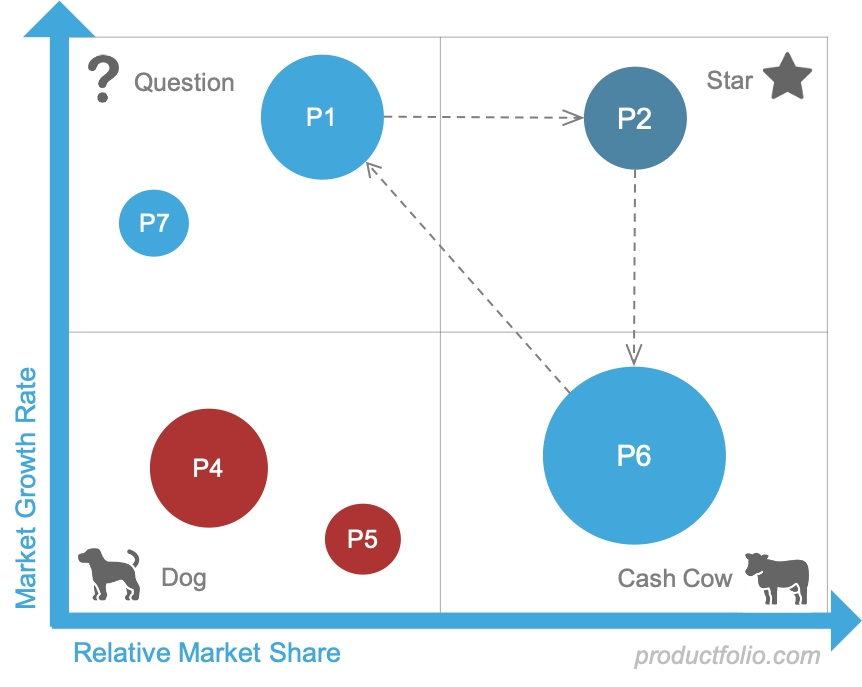A Guide Product Portfolio Management
A product portfolio is the collection of all items, products, or services that are offered by a business or need to be managed collectively. Product portfolio management, therefore, describes the practice of assessing and managing a product portfolio.
Product Portfolio Management vs. Product Management
A product manager can become a product portfolio manager and vice versa. It is, however, probably more taxing transitioning from one than the other. So how do they compare?
While product portfolio management is about strategically managing all products that your company sells, product management is a function that involves guiding a product through its lifecycle, from conception to release and some activities that follow. One focuses on a single product (in most cases) while the other deals with a collection.
Product managers target the already-identified outcome(s) for one or a few products. Product portfolio managers, on the other hand, manage an entire product collection of a company from a broader organizational perspective.
A portfolio manager considers all products offered and assigns resources to each according to its value to the company. A product manager then attempts to achieve stated objectives with the resources made available to them.
How is Product Portfolio Management Beneficial?
Better use of resources
The most obvious benefit of portfolio management has to do with the effective utilization of the resources available. Portfolio managers have a better idea of how the different products of a company are performing. This enables them to know which ones deserve more resources and which ones should probably be cut.
The practice makes it possible to duly adjust investments and the use of resources in line with changing conditions. It lets you identify what products are in decline so that you can move resources to work on a more promising one. Portfolio management puts an organization in a better position to compare product development costs and benefits.
Faster releases
Companies can succeed in bringing great products to the market in a more timely fashion through the aid of good portfolio management. It can lead to the identification of processes that can be replicated across products to get things done more quickly. For instance, when a product succeeds, the knowledge gained with such can be shared by the portfolio manager to guide other products.
Faster releases may also lead to benefits that often come with being the first to the market. Portfolio management can help to identify useful replicable processes to help you deliver on time.
Quicker, better actions
Product portfolio management can promote improved and faster decision-making since it entails a central, high-level view of all products. It makes it possible to respond faster to changing market conditions.
Individual product managers might not know how much the changing conditions are affecting their products. A product portfolio manager can quickly tell when this is leading to less-efficient resource use and so quickly re-prioritize.
Key Skills for Product Portfolio Managers
A product manager can go on to become a successful portfolio manager with adequate determination.
The focus in portfolio management shifts from the everyday control of matters relating to a product to overseeing your company’s entire portfolio. You will now mostly be working through other individuals and teams.
Product managers may, therefore, find a transition to portfolio management more tasking. However, having the right skills would make things a lot easier. The interesting thing is that many experienced PMs already have some of these. Among the most important skills you’d need to succeed as a product portfolio manager are:
Prioritization skill
Effective product managers are usually very good at prioritizing. This skill will be crucial for managing a portfolio efficiently. The main difference is that prioritization will now be at a higher level.
Product outcomes are no longer the main factor for determining what is important but company goals. You should know when resources will do better for your company and the market when moved to a particular product.
Communication skill
As a product portfolio manager, your work will mostly be done through others. This demands that you be an effective communicator. You should know the right way or language to use when communicating with different groups and teams to achieve desired goals.
Listening skill
This is related to communication, which is a two-way thing. You will need to be a good listener to receive and properly process feedback. Give due attention to what product managers are trying to tell you about their products and work. Why are they insistent on particular features or have they developed their roadmap a certain way, for instance? You can only know when you listen.
Technology Simplifies the Process
The work of product portfolio managers is somewhat easier these days with a variety of tools available. You can take advantage of these to enable you to do a better job.
These automated solutions help you to assess product performance and the productivity of teams. They give an idea of how well things are going toward achieving company goals and aid in identifying possible issues. The tools often include useful visual workflows and templates, including X-Y graphs and the growth-share matrix.

An automated solution can enhance transparency, with everyone able to see why some products should get more resources. It can make communication easier and help build trust. Everyone can see how data informs the decisions that are being taken.


